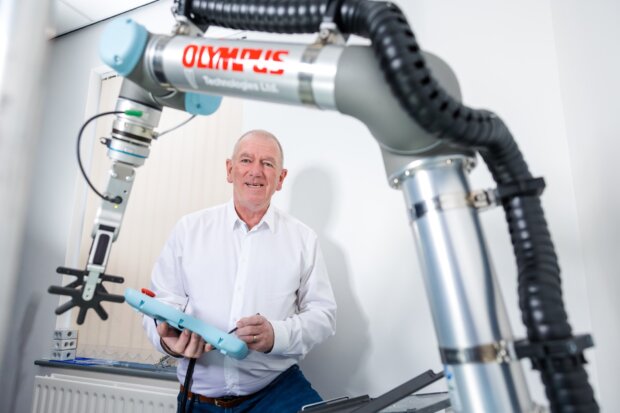Since starting my engineering career +20 years ago, manufacturing has evolved at pace, with new technologies, processes and practices that have been introduced year on year.
This is a relatively new era of manufacturing centred around automation, real-time data, and interconnected technology that has the ability to boost efficiencies, productivity, predictable maintenance and profitability for businesses.
Industry 4.0 represents a significant shift that is occurring in manufacturing, this is not a buzzword, but clear changes that are happening in organisations that are seeing real value in smart digital technologies and the use of virtual machine twins using artificial intelligence (AI).
From robotics and autonomous equipment to 3D printing and the Internet of Things (IoT) with connected devices, businesses that are adopting these new technologies and are already realising the potential of Industry 4.0.
For example, look at engineering simulators. Now, you can use multi-physics simulators to determine if your product will achieve its design goals without the cost of many prototyping concepts, “almost a design-simulate and build once approach”.
This can also be seen in big manufacturing data analysis, with a combination of AI to enable prediction and answer ‘what ifs’, which is especially important if there has been an early adaption to an extensive digital twin, which can then be used to produce early virtual manufacturing data.
Accelerometers, a sensing device that produces an electrical signal in response to a mechanical vibration, have also advanced, they used to be so difficult to setup, but with the evolution of microelectronics and IO-Linked technology, there are now virtually plug and play.
This type of technology has already been embraced by industries such as aeronautics, space, defence, and automotive manufacturing, but there are still challenges for SMEs looking to drive an implementation plan.
There is a greater need for ease of use for new manufacturing technology, which will in turn reduce costs and enable a quicker return on investment, which is especially important for SMEs.
Since working at the SAM project, I have supported a number of SMEs looking to explore the possibilities and benefits of implementing smart technologies.
For example, we’ve had several successful demonstrations using microcontrollers, designed to be configured by non-software engineers. The User Interface is configured so you simply select what action you want when a button is pressed. I see this as a great leap forward in the market, having internet enabled devices have had a lot of consideration in the ease of use, as a consequence you’re not likely to require additional personnel.
The SAM Project has also supported SMEs in the region to understand what is achievable with new technology through knowledge transfer, and we have used experimental data to correlate Finite Element Analysis for many projects to validate if designs are fit for purpose.
With the introduction of smarter manufacturing technologies being pioneered by the larger OEMs, these technologies are filtering down to smaller businesses as their production data may be required by their suppliers “a product supply web”.
Imagine, a secure global interconnected bi-directional manufacturing network which can see not only their supply chain but other suppliers too. This will require both people and tools to achieve this, so the future is bright for smart advanced digital manufacturing.


